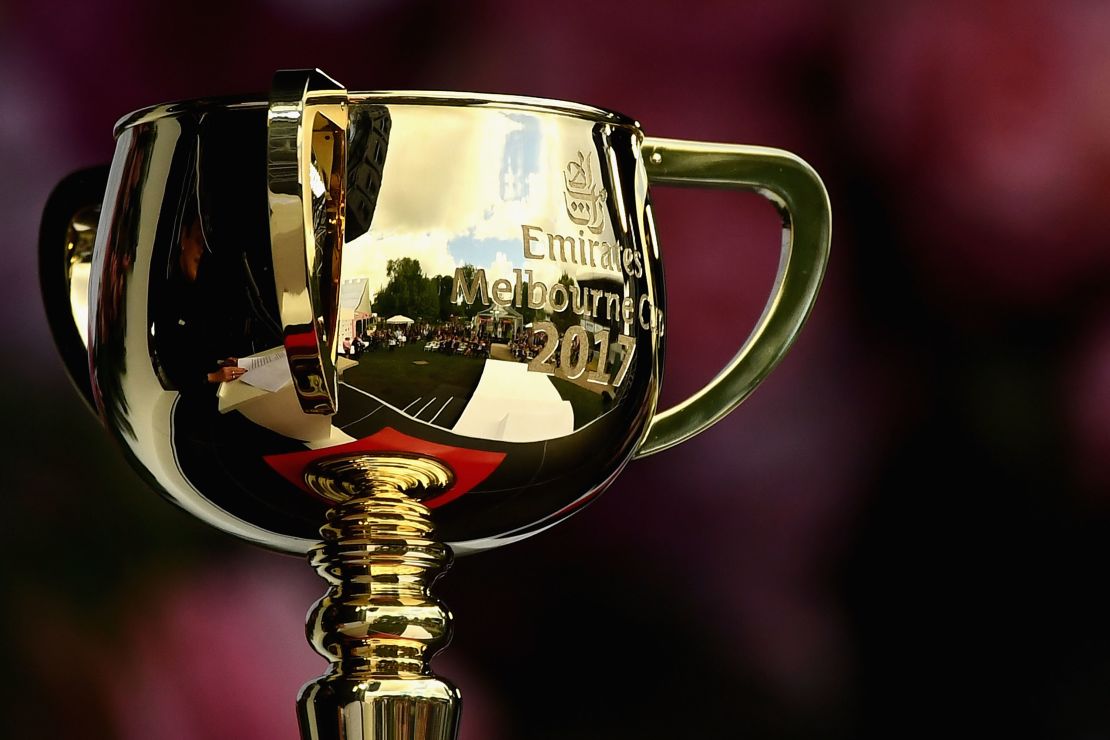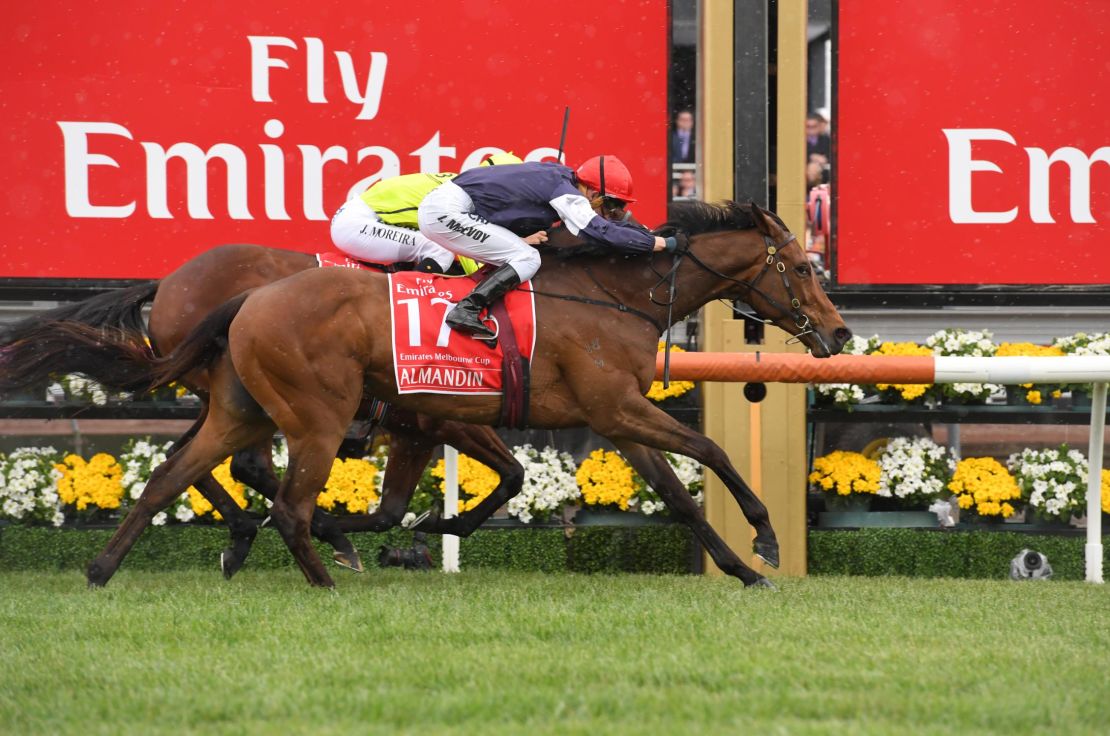Story highlights
From 1916 to 2000, one family business made the famed Melbourne Cup trophy
James Steeth designed the now iconic "Loving Cup" in 1919
The winner of one of the world’s richest horse races on Tuesday will take home an iconic trophy with a long history that involves a family tradition spanning more than half a century.
The Melbourne Cup was first run in 1861 at Flemington Race Course, but the iconic “Loving Cup” design didn’t appear until almost 60 years later, when production moved from the United Kingdom to Australia.
Until then, winning thoroughbred owners received anything from a gold watch to a ridiculed “tea and coffee set” or a silver bowl considered a “monstrosity” and immediately sold off by the winner in 1865.

“The 1915 Cup trophy was the last one made in the UK after it was delayed in arriving to the Melbourne Cup Carnival that year,” said Joe McGrath, VRC Racing Engagements and Cup Tour Manager, who is also known as the “Keeper of the Cup.”
“This was due to the outbreak of World War One, which saw enemy destroyers parked in the Indian Ocean.”
The VRC engaged Melbourne-based William Drummond & Co. to manufacture the trophy, and Drummonds selected Australia’s leading gold and silversmith James Steeth to design and create it.
“James did beautiful work. He just had the hands for it. Everyone in the industry I met used to say of Jimmy that he was a real craftsman,” said Fortunato “Lucky” Rocca, who joined J.W. Steeth and Son as an apprentice in 1962 and went on to make 30 Melbourne Cup trophies of his own.
READ: After 168 years, is the Melbourne Cup finally going home?
Iconic design
It took Steeth three years to settle upon today’s iconic three-handled design, which represents the relationship between the winning trainer, jockey and owner.
“In 1916, Steeth made a gold bowl in an art-deco style with similar dimensions to today’s trophy. I would call it the prototype,” said Andrew Lemon, a consultant historian to Victoria Racing Club (VRC), host of the Melbourne Cup.
The following year, Steeth added a stem to elevate the base, plus two handles.
“It’s a slightly cruder version of what we have today; while it’s obviously an attractive object, it doesn’t have the elegance of the three-handled version that appeared in 1919,” said Lemon, who wrote the three-volume History of Australian Thoroughbred Racing.
When James Steeth passed away in 1959, his son Maurice Steeth, a fine-arts lecturer and Australian silver expert, took over the family business.
READ: Police plan for ‘hostile incursion’ at Melbourne Cup

“I don’t remember a lot about my grandfather, but I was very involved with my father’s work and spent a lot of time with him in his workshop,” said Maurice Steeth’s daughter, Anne O’Donoghue, an immigration lawyer in Sydney.
Her childhood memories include weekend expeditions to her father’s gold mine, which Maurice bought and mined as a hobby, and peering into his safe to see golden candelabras that had been gifted from the likes of Queen Victoria and Lord Melbourne.
Rocca also has fond memories of his boss, who allowed them to stop work to listen to the race on the radio in the years before Melbourne Cup day was made a public holiday in Victoria.
“Maurice was strict, but we got along famously,” he said.
O’Donoghue said if he father hadn’t died suddenly of a heart attack when she was 17, she too would have gone into the business.
“He saw me as another Hester Bateman, the well-known English silversmith who was also a woman,” O’Donoghue said. “But back then, it was a barrier for women to get into that kind of business.”
Instead, Rocca took over the family owned company and made the Melbourne Cup trophies for 30 years, from 1970 until 2000.

‘A dying art’
To mark the centenary of the Melbourne Cup trophy in 2019, O’Donoghue plans to launch a foundation that includes an artisan scholarship to help preserve what she describes as a “dying art.”
Rocca believes he is the only craftsman left in Australia who continues to fashion trophies by hand.
“The trophies of today aren’t what they used to be. Techniques change over the years; that’s what happens over a long period of time. I don’t blame people for going that way – it’s just the way of the world. But as time goes on, this craft will die out,” he told CNN.

The difference, he admits, is almost imperceptible, but important nonetheless.
“It’s like buying a suit from a shop where a machine has made it, or getting a nice suit that has been made to order. They look the same; they probably feel the same, but there’s just a bit more character about a handmade suit, because someone has put in the time and effort and has actually thought about it, rather than a machine thinking for you.”
That’s not to say that the current Melbourne Cup trophy, which is made from 1.65 kilograms of gold and is valued at more than $200,000 Australian (US$152,000), isn’t made without painstaking care.
Andrew Cochineas, the chief executive of Pallion, which under the ABC Bullion brand won the tender in 2015 to create the Melbourne Cup until 2020, said the trophy takes more than 300 hours to produce.
“The cup is now crafted by using a combination of hand skills and a machine. This technique is slightly different to how Lucky (Rocca) would have manufactured the Cup,” said Nicola Evans, Pallion’s Marketing Manager.
Past techniques, such as using fragments of rhino horn to smooth the insides of the cup, resulted in quite strong differentiations between individual trophies, whereas now it’s quite difficult to tell different trophies apart, according to Lemon.
“The Melbourne Cup is still surprisingly meaningful to a very large cross-section of Australia. There’s a value to it that is over and above the price of gold,” he said.
Visit CNN.com/horseracing for more news, features and videos.




